Traditionally, almost all of Britain’s asparagus came from the Vale of Evesham, but now most is grown in Lincolnshire and Cambridgeshire. In June 1901, the author Rider Haggard, spent a few days at Wickhamford Manor as a guest of John Idiens. A report of his visit to the area appeared in the London Daily Express and was reproduced in the Worcestershire Chronicle of 6th July. He made comment about market gardening in the Evesham area and one thing he mentioned concerned asparagus growing:
“Another misfortune from which the district suffers is the present prevalence of asparagus blight, probably because the land is growing sick of asparagus, which used to be a great mainstay.”
Asparagus does suffer from a number of fungal diseases but the identity of the one he reported is unclear. Horticultural growers tended to use the term ‘blight’ to refer to a range of diseases affecting their crops.
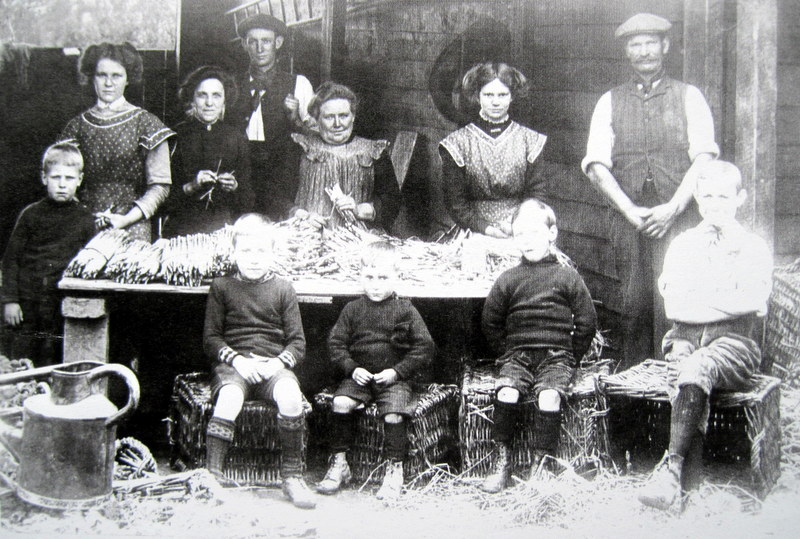
After the Great War, the Ministry of Agriculture and Fisheries produced booklets every few years entitled ‘Fungus and Allied Diseases of Crops’. Plant Pathologists from various institutes reported their findings to the Ministry. At that time, Worcestershire was in the area covered by scientists based at Long Ashton Research Station, University of Bristol. In the edition covering 1920-21, the booklet mentioned two asparagus diseases, rust and violet root rot, but stated that no cases of either had been reported. In the 1922-24 report it was said that “No diseases have been reported on this host for several years”.
Things had changed by the time the report covering 1925-1927 was published. It stated, in the Asparagus section that:
“In the previous Report of the present series it was stated that no disease had been reported on this host for several years. It has been found, however, that the cultivation of this crop is by no means free from troubles due to disease, and in the Evesham district, at any rate, matters have become serious in the last two or three years.” It goes on to mention a few diseases and concludes with - “It is hoped that before long the diseases of asparagus in this country will receive the attention they deserve and require.”
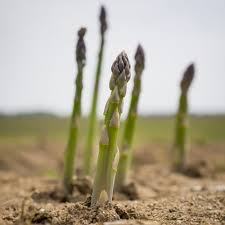
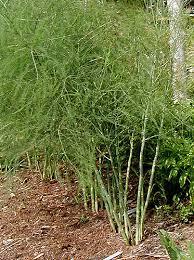
Charles Walters' asparagus crop in 1909
Asparagus is a perennial crop, that should not be cut during its first two years of growth, the ‘fern’ being allowed to die down naturally in the Autumn. When in production, the ‘spears’ are cut for market from April to June or July and the plants are then allowed to produce ‘fern’ for the rest of the Summer. This was later cut off at soil level, after it had supplied nutrients to the root system. Charles Walters account book for 1909 survives and the number of asparagus spears he cut that year and the prices received are as follows:
- April: 1,100 spears for £1/8/6, followed later by 700 spears for 15/-
- May: 34,300 spears sold to H. Masters for £16/16/10 and 10,800 spears to Wm. Frost for £6/4/9
- June: 36,600 spears to H. Masters for £23/6/5 and 8,400 spears to Wm Frost for £4/2/10. In addition, 300 spears of ‘white asparagus’ (cut just as they appear above the soil) was sold for 2/3d and 800 spears of ‘special asparagus’ (extra large spears) for £1/15/6. These were sold to H. Masters, who also bought 100 spears of ‘sprue’ (thin spears of little value) for the princely sum of 2d ! A further 8,400 spears were sold to Wm Frost for £4/10/2.
- July: The season this year extended into July and a final 600 spears were sold to H. Masters for 14/3d. Normally asparagus harvesting would cease on mid-Summer day, but if a crop was due to be ploughed that year, at the end of its useful life, cutting would continue into July.
The total sum earned by Charles Walters from his asparagus crop in 1909 was £59/2/5. This is equivalent to over £7,000 in 2022.
In the mid-20th century, as well as sending asparagus to market, many growers had fruit and vegetable stalls beside the main road on Pitchers Hill.
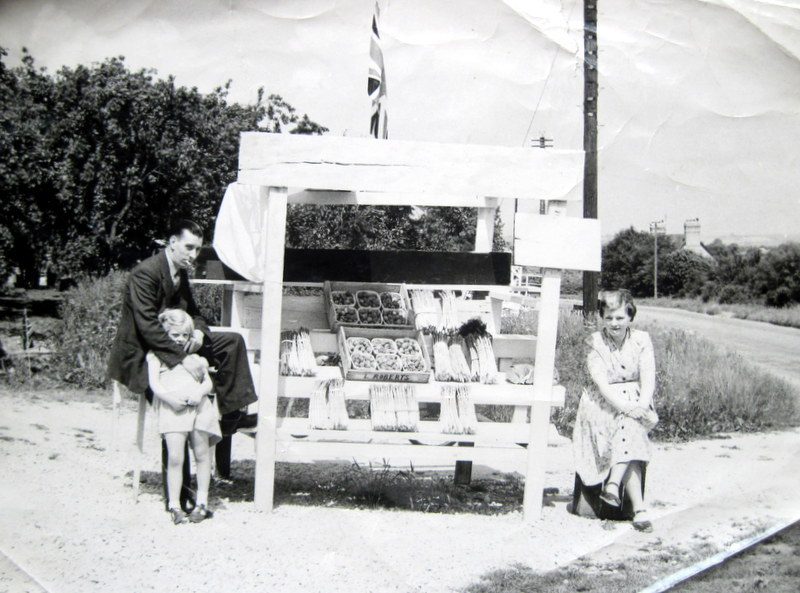
Asparagus growing in Wickhamford during the Second World War
When the National Farm Survey was undertaken, from 1941 onwards, 142 growers in Wickhamford were sent questionnaires to complete. On these forms they gave details of their land and crops. A number of forms were never completed but fifty-eight market gardeners in Wickhamford reported that they were growing asparagus, so the problems described in the 1920s do not seem to have discouraged the production of asparagus locally. The acreage of asparagus grown by the responding gardeners ranged from a quarter of an acre to, in one case, three acres. The total acreage reported upon amounted to 63.5 acres, an average of a little over 1 acre per person. The grower of the 3 acres was Robert William Walters (son of Charles Walters), of the present day 40 Manor Road, who was market gardening on a total of 17 acres in the village. Of this, 11 acres were producing vegetable crops.
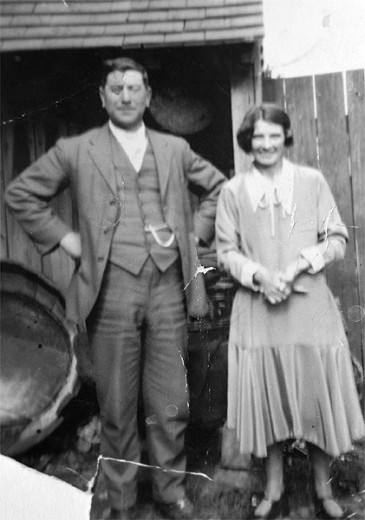
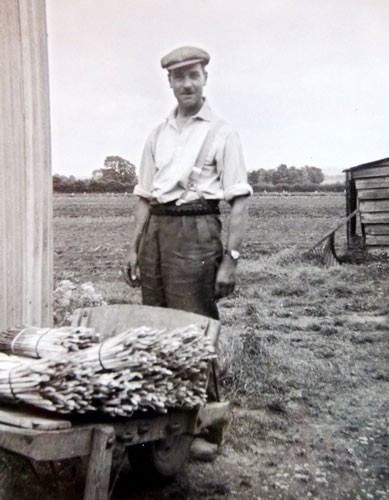
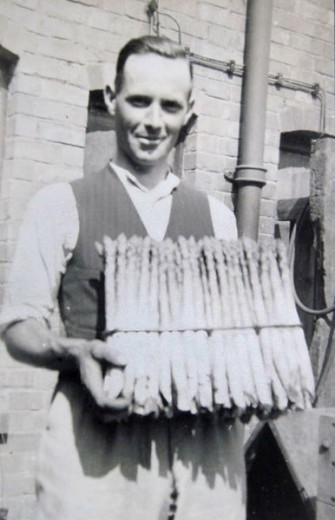
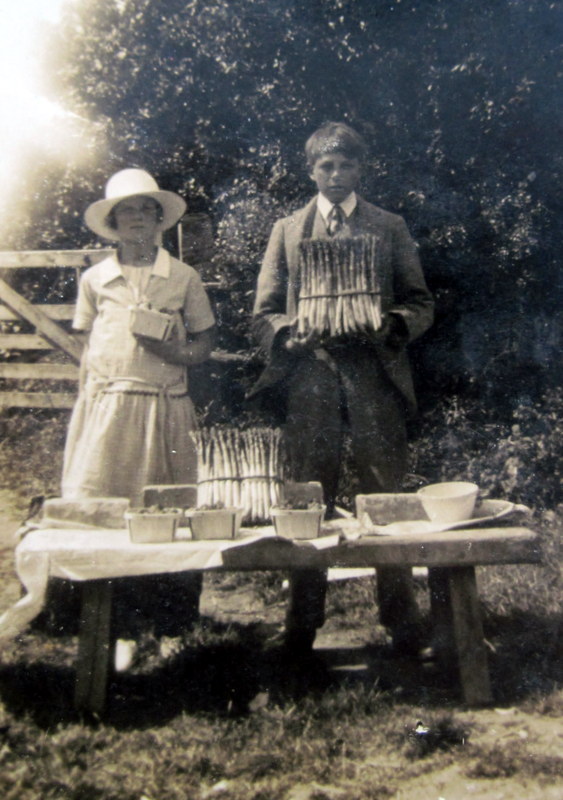
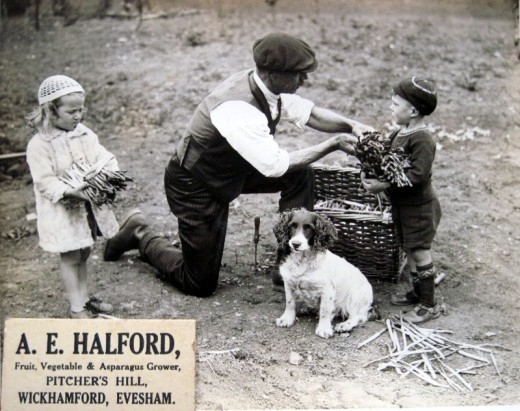
The present day
With the decline of market gardening in Wickhamford, after the Second World War, asparagus is no longer grown commercially in the village, apart from some produced under glass on Longdon Hill. The Asparagus Auction and Fair, held every year at The Fleece Inn, Bretforton, continues the tradition of the crop in the Evesham area.
Tom Locke, March 2022
Val Harman’s Memories of Asparagus Growing at Wickhamford
My Dad, Fred Mason, like many other market gardeners in Wickhamford, grew asparagus. Dad’s asparagus beds were always in Wetfurrows on the two pieces of land he rented from Christchurch. It was planted on good ‘stick to your boots clay’ which Dad always said was the right medium to grow the crop. Asparagus was an important crop to Dad, as it brought in an income from the end of April until the end of June. When I was a child, I had no conception of acreages so have looked on the 1941 Farm Survey and my father was growing one and a half acres and that was probably still the acreage when I started going to his land.
When Dad got married, in 1943, there was no accommodation available in Wickhamford and he rented a property in Evesham so he either had to take the bus or ride his bike to Wickhamford. He must have gone on his bike in the asparagus season, so he could start cutting as early as possible. I was born in 1945 so I guess my recollections of the asparagus season are from the early 1950s onwards.
Dad would start cutting the asparagus and when he had cut a good handful he would place it on the top of the bed in the next row. I always admired his skill at knowing exactly where to put the asparagus knife into soil and in one simple operation the spear was cut and in his hand. He would carry on cutting until he reached the bottom of the row and then back up the next row putting the bundles on to the piles of asparagus that he had cut in the previous row. This carried on until all the asparagus rows were cut and then it was put into pot hampers and carried to the shed at the top of the land. My dad didn’t drive at that time but he had a Trusty tractor and trailer. He would put the pots of asparagus on to the trailer and go along the occupation road to the bottom of his land on Pitchers Hill, and then up to the top of the land that was adjacent to the A44. He then put one of the pot hampers onto the metal frame that was on the front of his bike and cycled the short distance down to his family home on Pitchers Hill. How many times he did this in the height of the season I have no idea.
My mother, and grandmother until she had to look after my house-bound grandfather, tied the asparagus in the shed in a variety of shaped boxes. The boxes looked as if they had been knocked together by my Dad, or grandad, apart from one that was a bit more sophisticated. The asparagus was tied into round bundles with raffia that had been cut to the right length and tied into a bundle and hung from a hook from the roof of the shed. The person tying just reached up and pulled a strand of raffia from the bundle laid it in the box ready for the next bundle. When the asparagus was tied Dad would cut the bundles to the correct length and they would go into what was called the cooler. This was an oblong box, probably 3ft by 5ft, that contained a shallow amount of water into which the asparagus was placed overnight, to keep it fresh ready for packing in the morning. Dad always sent his asparagus to be auctioned at the Central Market in Avon Street. It was picked up by their lorry, that got it to the market in time for the auction sale that probably started around mid-morning. You never knew how much you were going to get for your crop. Historically if the weather was cool and the asparagus was not growing so quickly the prices were good. If there was a glut because of hot weather then prices could be low. Dad often related that George Sutton, who lived on Pitchers Hill, had gone to the market to see his asparagus sold on the day of the 1937 Coronation of George VI. When he came back, he said to Dad, ‘the prices are on the floor’.
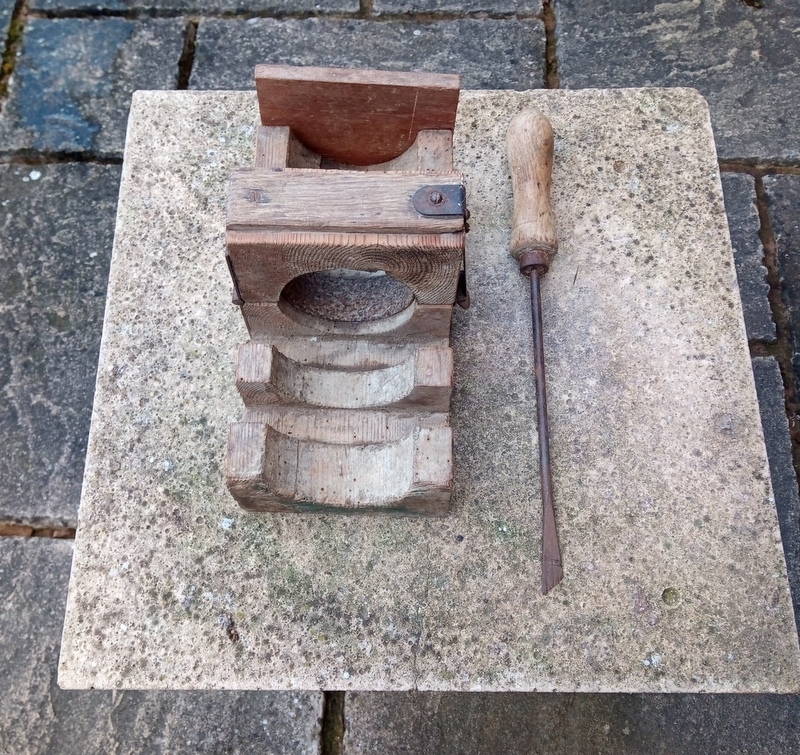
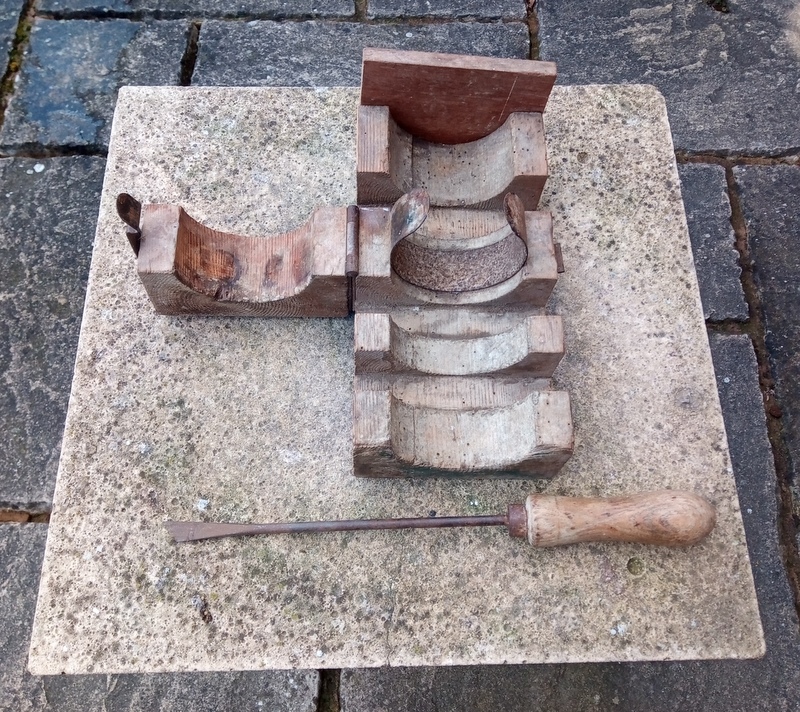
In 1954, we moved to Wickhamford and this must have made life so much easier for my parents. In 1956 my grandparents died within two weeks of each other, so that was the end of the asparagus being tied in their shed. It was now tied in the shed next to Dad’s bungalow. The cooler never came from my grandparent’s house and tin baths were used instead. Around 1957, Dad learned to drive in his beloved Land Rover, Registration NX 1071, which he had bought new at a discount, because his brother worked for the Rover Company. He could now drive to Wetfurrows and transport his crops.
The asparagus season started towards the end of April when the first buds appeared and cutting finished on the longest day, 21st June, unless you were going to discard a particular area of asparagus, usually because it was no longer producing a decent yield. If that was the case you kept cutting it. The asparagus spears that grew after the end of cutting were allowed to go to fern. Eventually the fern died down and was cut and raked up into piles and burnt in the alleys. I remember seeing berries on some of the fern - this was the Evesham type of asparagus, not the hybrid type grown today, that do not produce berries. Come the spring and before the cutting season, I remember picking up what my Dad called the kecks. This was the bottom part of the fern that had been left in the soil. I liked this job and I’d take my wicker basket and go up and down the alleys picking them up. I guess if they were left, they would have got in the way of the buds coming through and cause them to grow twisted or bent. Growers didn’t use sprays to kill the weeds in those days and Dad would keep the beds clean with his hoe. I did this a few times and it was another job I quite liked. Sometimes I would have a go at asparagus cutting, but I didn’t have my father’s skill and could never cut a spear in one simple operation.
In Wetfurrows, there were three growers with asparagus beds. Bill Walters, the Moisey brothers and Dad. On the other side of the occupation road, on land that formed part of Pitchers Hill, there were more asparagus beds, belonging to Arthur Carter, Allen Halford and Harry Cook.
From when the season started, asparagus was frequently eaten. Never the best buds but always the crooked buds. There were none of the fancy asparagus recipes that you see today. It was either cooked in salted water and eaten with bread and butter or served as a vegetable with dinner. It was always delicious with lamb, gravy and mint sauce. It was never cooked el dente, that you are likely to get served in restaurants today and the spears were always picked up with your fingers. When we lived in Evesham, I can remember our next-door neighbour asking for the water the asparagus had been cooked in. Apparently, asparagus is good for the kidneys and she believed by drinking the water it would have the desired effect. All I can say is that you certainly know when you have eaten asparagus, but I will say no more!
Val Harman, March 2022
Footnote on Badsey and Aldington growers
In the National Farm Survey, 124 growers with land in Badsey returned forms indicating that they were growing asparagus. Their total for this crop amounted to 135.5 acres of land. The largest growers were, Mr W. L. Edwards of Cleeve Prior, (5.25 acres), Messrs F. & J. Byrd of Bretforton (4 acres) and James Willmore of Pear Tree Cottage, Badsey (3 acres). Separate forms were returned by Aldington growers and these show that another 21 acres of asparagus was grown there, by 15 market gardeners. These included two large acreages - 6 acres by James Barnard of Evesham and 5 acres by the Ross Bros of Evesham.
